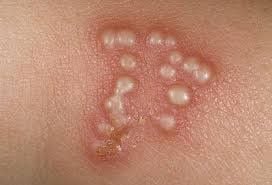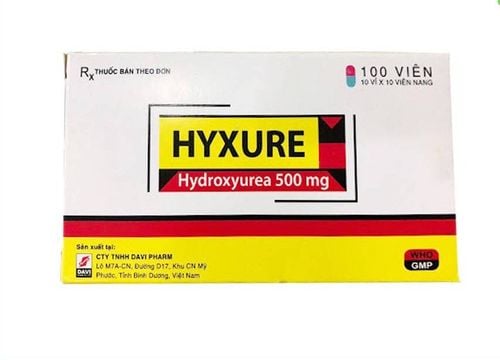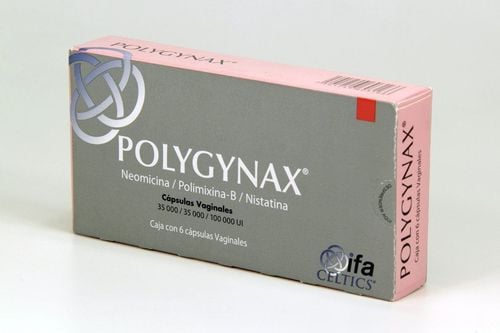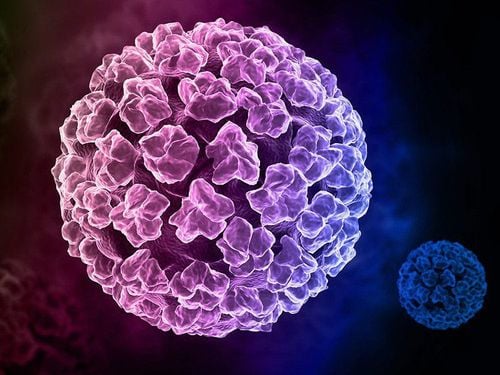This is an automatically translated article.
Few areas of the body are as sensitive as the skin of the genitals. This is an area that is very reactive to foreign factors as well as abnormalities inside the body. Most genital warts are not usually a serious medical condition, but can cause some discomfort and inconvenience in daily life.
1. Contact dermatitis
Types of acne that grow in the private area are likely caused by contact dermatitis. Contact dermatitis is an allergic reaction when something touches the skin. Genital contact dermatitis can be caused by skin sensitivity to:
Shower gels, soaps, especially if they contain fragrance ingredients. Wipes, deodorants, lotions, or perfumes,. .. Tampons or tampons Douches Spermicide, condoms, lubricants or aphrodisiacs Over-the-counter topicals Detergents and fabric softeners In addition, skin causes such as: perspiration. , vaginal secretions, urine, semen, etc. can also irritate your skin.
Symptoms: Severe itching, erythema, acne in the genital area, these genital warts often contain clear liquid or broken crust, scratches caused by scratching, may be accompanied by purulent superinfection. Once you've determined the cause of your acne breakouts is contact dermatitis, avoid contact with the irritant.

Thụt rửa là một trong các nguyên nhân gây viêm da tiếp xúc và mụn mọc ở vùng kín
2. Folliculitis
Bacterial folliculitis can cause acne breakouts in the intimate area.
Improper shaving of the genital area is one of the potential causes of folliculitis. In addition, folliculitis can also be caused by improper or unclean intimate hygiene, using too many chemicals to clean or using cleaning solutions, wearing clothes that are too tight, tight on the body for a long time. .
The genital warts in this case are usually distributed mainly at the base of the hair follicle, with pus, red swelling, burning pain, itching and a high risk of infection.
3. Inflammation of the purulent sweat glands (HS)
Purulent gland inflammation (HS), is a chronic infectious skin disease of the sweat glands. It causes acne-like lesions all over the body, including the genital area. The cause of this rare disease is currently unknown.
4. Molluscum contagiosum
Molluscum contagiosum is an infection caused by the molluscum virus, a virus of the poxvirus group that can cause blisters on the genitals and anywhere on the body. Transmitted by direct contact, self-infection, and through objects (eg, towels, bath sponges) and bath water.Molluscum contagiosum is a common disease in children. In adults, the disease is acquired through close contact with an infected person's skin (eg, sex, wrestling).
Basal lesion of molluscum contagiosum in the genital area is a round pink, dome-shaped, smooth, glossy, or pearl-shaped papule, mid-concave, 2-5 mm in diameter, usually occurring on the face and trunk of the body. children and on the lower abdomen, penis, or vulva in adults.
Molluscum contagiosum can be treated by mechanical methods (eg curettage, cryosurgery) and topical drugs (eg imiquimod , tretinoin ).
5. Genital herpes
Genital herpes is caused by human herpesviruses 1 (HSV-1) or 2 (HSV-2), transmitted by contact with lesions or skin contact with sexual partners when symptoms are not clear. After infection, the dormant HSV remains in the ganglia, so recurrent episodes can occur.
Initial lesions are red or pink blisters, growing individually, containing fluid. Then gradually the acne develops into clusters like a bunch of grapes, causing inflammation, fever, muscle pain, fatigue, when the acne breaks, it can become infected to form sores that make the patient painful, itchy and uncomfortable. Genital herpes is distributed on the tip of the penis, on the shaft of the penis, on the clitoris, vagina, vulva, perineum and cervix, around the anus and rectum during anal-rectal sex. colon.
Especially in pregnant women, this type of genital warts can be transmitted to the fetus or newborn, HSV is transmitted to the baby when they come into contact with the mother's vaginal secretions during childbirth, rarely transmitted Placental and neonatal HSV infection is a serious and potentially fatal infection in neonates. This can be considered as one of the types of acne in the private area that causes quite serious consequences, and not always genital warts and accompanying symptoms also appear and foretell the disease condition.
Antiretroviral therapy to reduce the spread of the virus and its symptoms. However, there is still no cure for genital herpes, patients can only treat symptoms, heal the sores and limit the possibility of recurrence.
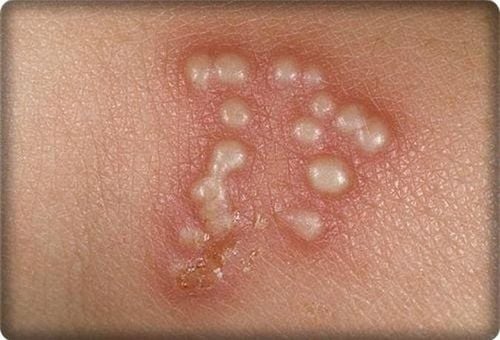
Mụn rộp sinh dục là một trong các loại mụn ở vùng kín thường gặp
6. Hormonal changes
Hormonal changes at different stages such as puberty, pregnancy, perimenopause, menopause will increase the activity of the sebaceous glands, thereby speeding up the keratinization of cells, causing blockage of the cells. pores and acne formation. Types of acne in the genital area due to this cause have the common characteristic that it is not contagious, white acne heads are usually distributed in the pubic area and do not cause itching.
7. Gynecological infections cause genital warts in women
Gynecological infection is a common condition in women due to many different reasons such as fungal infection, infection, ... . When the infection is prolonged and not properly treated, it can lead to acne in the private area with the following characteristics: hard acne, accompanied by other symptoms such as itching, abnormal discharge with strange colors. and a lot, bad smell, painful urination, burning pain during sex.
The main cause is due to unclean intimate hygiene, unsafe sex creating conditions for fungi and bacteria to grow.
8. Genital warts
This genital warts are one of the common types of genital warts caused by the human papillomavirus (HPV). Among them, high-risk HPV infection (especially types 16 and 18) is the main cause of cervical cancer. Genital warts are a dangerous sexually transmitted disease. Usually, after being exposed to the virus for 6 to 8 months, the disease begins to appear red genital warts, usually painless, non-itching and small in size, growing individually on the pubic and lateral part. in the big lips, small lips, on the penis, foreskin, scrotum.... Then these skin tags quickly develop into a crest-like shape, causing much discomfort to the patient. If not treated properly and timely, there is a high probability of infection and cancer in the genital organs.
Genital warts, if not treated properly and promptly, have a high probability of leading to infection and cancer in the genital organs. HPV vaccination is the best and safest way to limit this disease and prevent cervical cancer in women
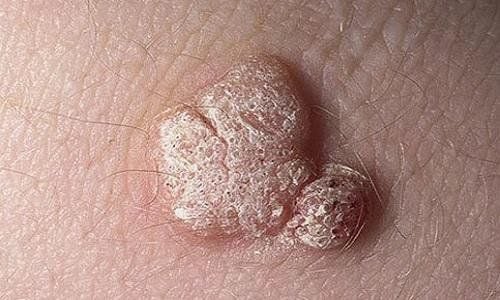
Mụn cóc sinh dục ở vùng kín thường do virus u nhú ở người (HPV) gây ra
9. Inguinal mycosis
Frequent wet skin condition, poor hygiene, hot and humid climate environment are risk factors leading to the formation of inguinal mycosis. Lesions in the skin of the scrotum and inguinal region are darker in color than normal skin, on the border of normal skin and diseased skin may appear vesicles arranged in an arc, accompanied by severe itching, causing discomfort to the patient.
To treat this disease, it is necessary to use a combination of oral and topical drugs.
When detecting genital herpes in the early stages, patients need to actively go to medical facilities for doctors to diagnose, advise and have appropriate treatment.
Package of Social Diseases Examination and Screening of Vinmec International General Hospital helps customers to screen for social diseases in order to detect diseases early for effective treatment and avoid complications. When registering for the Social Disease Screening Package, customers will receive:
Dermatology Specialist Tests Perform tests such as: HIV Ab rapid test, Chlamydia rapid test, Treponema pallidium rapid test, rapid test. Qualitative and quantitative Treponema pallidum TPHA assay, bacteriological staining and endoscopic staining of fungi
Please dial HOTLINE for more information or register for an appointment HERE. Download MyVinmec app to make appointments faster and to manage your bookings easily.




